“POPE JOAN” OF RHOIDES AS A TOURIST ATTRACTION - SUGGESTIONS AND OPINIONS
Maniou Fotini
Master from the University of Aegean
Manola Maria
Associate Professor at the University of Western Attica, Department of Tourism Management
Alexopoulou Anastasia
Department of Tourism Management, University of West Attica
Abstract
The popularity of a literary depiction or an author can make the reader want to visit the place the author wrote about, or he/she is connected to. This thesis studies the literary book "Pope Joanna" by the author Emmanuel Rhoides[1]. It is a classic novel, a milestone in Greek literature, which, although written one hundred and fifty-seven years ago, remains timeless and relevant. The quantitative research that follows aims to capture the possibility of the novel to function as a "tourist product" and to investigate the motivations and knowledge of the Greeks of Athens regarding the author's work.
Keywords: tourist product, Emmanuel Rhoides, "Pope Joan", literary attractions, motivations, literary visitors.
1. MILESTONES OF THE BOOK
The story of Pope Joan takes place in a medieval era but teaches lessons of courage and mental strength to this day. The novel has fascinated and continues to fascinate many generations of people because it remains relevant. With this novel, Rhoides delivered a story - an anthem for women with timeless truths and values. (Gerontopoulos, 2014). He connected the protagonist with the life of every educated and powerful woman as a role model but at the same time he narrated all those stages of the female figure in the social arena of a male-dominated society. (Rhoides, 2017). Joan experiences loss; she falls in love, lives in a toxic relationship, has to "choose" between her dreams and loneliness, gets pregnant and dies. The following could be considered as milestones of the novel:
- Her remarkable love and determination, the moment she decides to change her identity and follow her lover.
- The second point and the most catalytic is when Joan leaves Froumentio, in order to follow her dream and finally with courage, stubbornness and persistence she manages to end up on the throne of the Vatican. (Moullas, 1994).
2. HISTORICAL OVERVIEW
The history of literary tourism goes back quite a long way. Some scholars claim that religious pilgrimages in antiquity were forms of literary tourism, with D. MacCannell stating that the first tours were actually religious pilgrimages. H. Hendrix identified the first cases of literary tourism practices in the ancient Roman world. Cicero (106 BC) paid tribute to writers’ graves in De legibus, and after his death, Virgil's tomb near Naples became a tourist attraction.
Literature has been a powerful source of travel inspiration since the Grand Tour of Europe in the 18th and 19th centuries. Nevertheless, although roots of literary tourism can be found in ancient times, it wasn’t until the second half of the 20th century, that it gained gain widespread recognition and acceptance (Pocock, 2016).
The study also addresses one of the most important novels of Greek literature, "Pope Joan". Her life is chronicled alongside the life and work of her creator, Emmanuel Rhoides. According to the legend, Joan was a woman who conquered the Vatican throne in the period 855 – 858 pretending to be a man. The work divided public opinion and it was condemned by the Church of Greece, characterizing it as "anti-Christian and immoral".
Both literary and film tourism are included in the cultural tourism industry, as it refers to any journey inspired by literature.
Literary tourism occurs when authors or their literature become so popular, that people are drawn to, either those locations associated with the author (e.g. birthplace, home, graveside), or those featured in his/her work (Busby & Klug, 2001). Access to these places gives lovers of literature the chance to interact with the creators of the works they admire, to the point where they can see and touch objects associated with the author or his/ her work.
In a nutshell, literary tourism is about visiting places that are famous for their association with books and authors.
3. TYPES OF LITERARY ATTRACTIONS
Smith identifies two types of literary attractions: places from "author's real life" and "imaginary" places related to writings.
In the first type, he explains that these places are related to the author and associated with different stages in his life (e.g. places of birth, chosen residences, graves). Many times, a point of interest for visitors is the artist's birthplace, as it offers insight into his past and suggests his social class before he became famous. For example, the city of Stanford-upon-Avon in the United Kingdom, is an attraction for hundreds of tourists from all over the world, as it is the birthplace of the famous playwright William Shakespeare. Writers’ birthplaces are, in one sense, the houses of writers – however, they are rarely the houses, which the written works have been created in. (Tsatalbasoglou,2020)
Smith identifies one more difference between places that became famous for their literature and those which had already been famous before the literature works. The last case concerns the buildings, which are considered important in themselves, because of their history and architecture. Nevertheless, there are some cases where several buildings and places would not have "lasted", if they were not related to authors and literary works. Without the person and/or literature, the aforementioned places would not have survived. In this case, it is the person and not the place and its architecture. (Vardopoulos& Als 2023)
Herbert claims that when literary places connect the real with the imaginary, readers' interest is stimulated. When someone reads a book, they penetrate into it, making the place described seem real. Watson & Saunders indicate reader's desire to travel to the real place. This hazy boundary between fiction and reality is fundamental to the decision-making regarding visiting a destination represented within fiction. (Andersen & Robinson, 2002). The visitor related to the fiction travels, either to answer his/her questions regarding the story of the work, or to change the "sense of place".
4.MOTIVATIONS FOR LITERARY VISITORS
Literary tourists’ motivations are influenced by various criteria. First, the author's use of a specific location, which the work takes place in, can create a specific image for the reader. For example, the small and abandoned island of Spinalonga - the former leper colony was a source of inspiration for Victoria Hislop in the book of the same name, "The Island".
Many of the works of literature and of the places described in them gain great readability, when their stories are shown on television or in the cinema. One such case is the book by the author De Bremieres "The Mandolin of Captain Corelli" and its presentation in the cinema. The film was shot in Kefalonia, and the island soon became widely known. ( Manola & Koufadakis ,2022)
Another influence that has been presented earlier concerns the creators and the places where they lived, were inspired by, and died.
- Most visitors are motivated to learn about the author's life and the place where he/ she lived and, to a lesser extent, to get to know his characters. Literary tourists focus on the author. This is because the author has the unique ideas that highlight the place. Many visitors also associate the trip with memories from their childhood and youth. (Manola, 2019)
- Another motivation is that many people go to literary places, not because they know or admire the author or his/her books, but to accompany friends or relatives, who are the actual fans of the author. (Squire, 1994).
- For some years now, a new trend has appeared in the tourism industry, which can be included in literary tourism. These tourists, known as bibliophiles, choose hotels with large – well-stocked libraries. The motivation of these people is obviously to read books in a very special atmosphere. (Macleod, 2018)
- If we look at the characteristics of literate tourists, which also includes literary tourists, it seems that they prefer to travel independently rather than with organized travel agencies. They are also people who do not consider tourism products to be commercialized and mass-produced, and they place great value on authentic experiences (Appadurai, 1986).
- Literary tourists want to get away from their everyday life for a while. At the same time, they have a rich imagination, as their goal is to travel to the places where the characters of the works or the authors themselves lived, to find out if the images in their minds are real and/or to create new ones.
- Summarizing the motivations of literary tourists, we could add as a characteristic that they are quite educated, with a love for literature. As such, these are middle- and high-income visitors seeking art and philosophy, as well as continuing their education and training. They can also be characterized as people with a strong sense of romance and nostalgia (Hudson and Richie, 2006).
5. LITERARY ROUTES AND THEIR IMPORTANCE IN LOCAL DEVELOPMENT
The tourism industry is an integral part of the local economy since it contributes to the creation of new jobs. These jobs cover a wide range of professions: from maintenance, construction and repairs to the establishment of businesses. Consequently, the unemployment rate decreases and the national income increases. (Sarantakou, 2019)
The demand for destinations of literary interest strengthens the competitiveness of tourism.
According to Throsby (2006), literary tourism promotes communication between individuals, as well as between different nationalities. This condition has certain effects, such as mental development, reduction of political-social conflicts.
The external economy refers to the cases where an individual’s activities affect the well-being of others in ways that are not promoted through the market. Therefore, literary tourism can act as the connecting link that will bridge the age gap, the old with the new residents, people of different nationalities and religious beliefs, being an important factor in building a strong social capital.( Manola &Mouchimoglou,2022)
Literary texts help readers connect and interact with other generations. Literary tourism can also contribute to the quality of life of local residents, by giving a "romantic" atmosphere to neighborhoods and cities, making them popular places to live and work.
According to Brown et al (2014), literary tourism could provide solutions to the country's challenges related to climate change, including the protection and regeneration of the great internal energy of old buildings (e.g., writers' houses that function as museums). It is a fact that the energy efficiency of buildings built before 1980 is higher compared to modern ones, while it has been reported that their reuse and renovation has significant environmental benefits. So, as the domestic sector represents 23% of energy consumption internationally, the necessity for new policies to reduce energy consumption and improve energy efficiency becomes even greater. Therefore, the preservation and reuse of structures can reduce urban sprawl.
6. RESEARCH METHODOLOGY
The survey was conducted among Greek citizens. A questionnaire was created according to Greek and foreign literature. The questionnaire was based on the self-completion method, with closed type questions (multiple choice method). 108 people participated in the survey. The collection of the questionnaires lasted from January 10th to January 13th.
- Do you travel often?
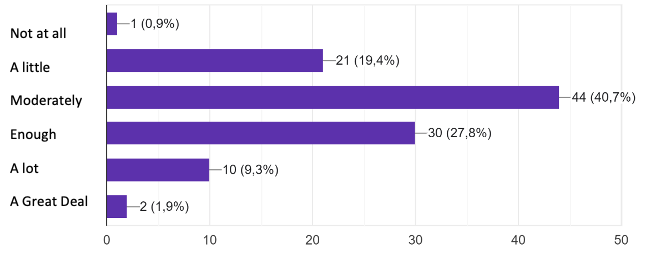
- Have you traveled to places related to books you've read?
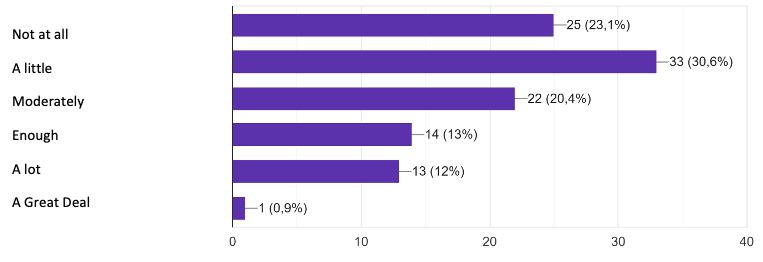
- How likely would it be for you to visit a place related to the life of a writer?
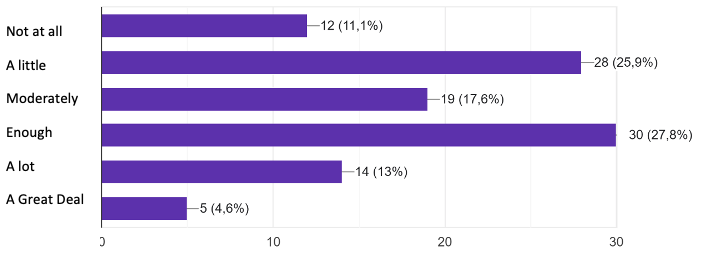
- Would you be interested in visiting museums, that are based on the life and work of authors?
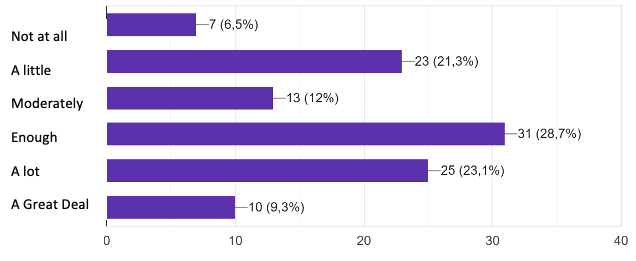
- The novel "Pope Joan" by the author Emmanuel Rhoides is a book-landmark in Greek literature. How well do you know it?
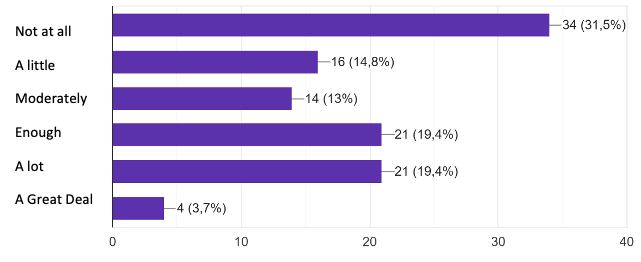
- How likely would it be for you to read the book in the future?
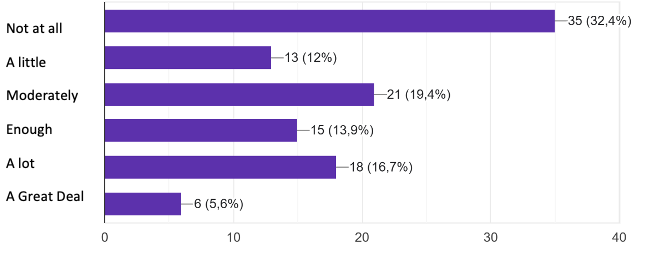
- Has the Pope's experiment left an indelible mark on the life and work of Rhoides?
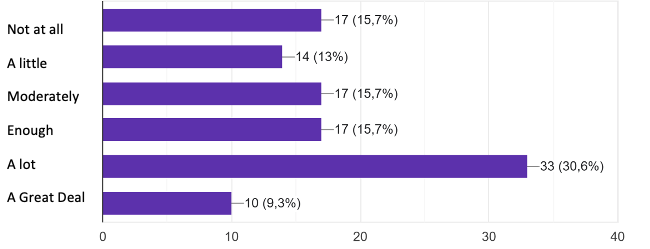
- How much do you think our country has invested in the development of this particular type of tourism?
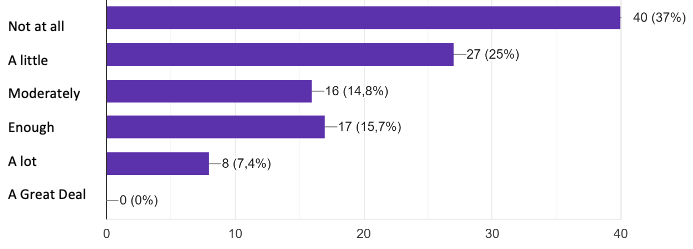
- Are there any development prospects in Greece?
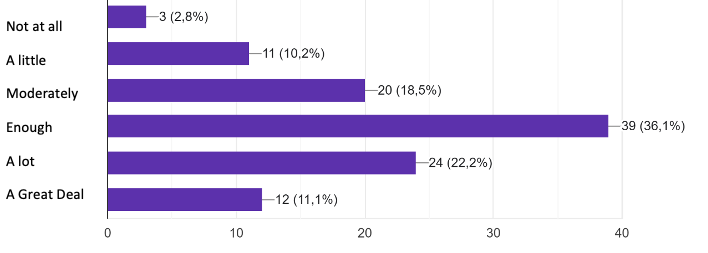
- Could literary tourism contribute to local development?
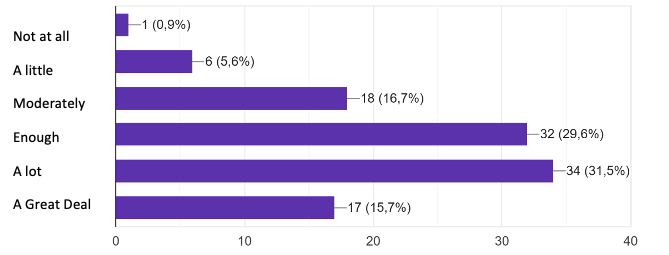
- Please indicate your gender
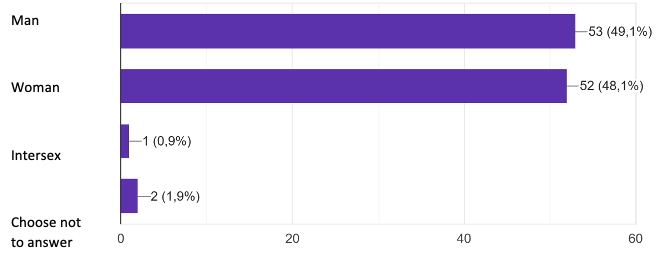
- Please indicate your age
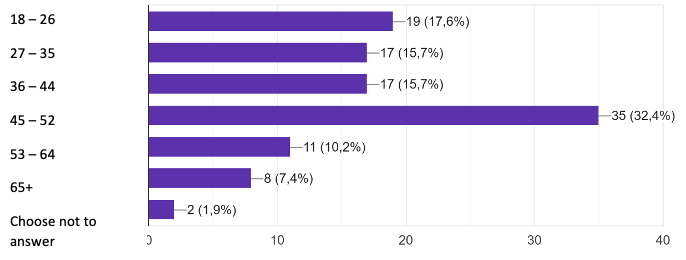
According to the results of the survey, literary tourism is not particularly widespread in our country, since the percentages listed above are at least discouraging. Greek citizens are not yet familiar with this type of tourism, while a large percentage did not seem particularly willing to get to know it.
It is also noteworthy that most people are neither aware of the novel "Pope Joan", nor of its author. Also, the greater percentage of people, who participated in the survey, do not wish to read it. As far as the development prospects for our country are concerned, there were quite a few who answered positively, however, not all of them shared the same point of view.
When asked, how much our country has invested in literary tourism, most answered mainly "Not at all" or "A little". Indeed, Greece has not engaged in this type of tourism and perhaps it is one of the main reasons that people are unaware of its existence. Literary tourism could contribute significantly to local development.
13.Survey Demographic Characteristics
|
GENDER OF PARTICIPANTS |
NUMBER OF PARTICIPANTS |
PERCENTAGE OF PARTICIPANTS |
|
|
|
|
|
|
|
|
|
|
|
|
|
Choose not to answer |
|
|
|
AGE OF PARTICIPANTS |
NUMBER OF PARTICIPANTS |
PERCENTAGE OF PARTICIPANTS |
|
18 – 26 |
|
|
|
27 – 35 |
|
|
|
36 – 44 |
|
|
|
45 – 52 |
|
|
|
53 – 64 |
|
|
|
|
|
|
|
Choose not to answer |
|
|
7. CONCLUSIONS
The development of literary tourism affects destinations, while at the same time contributes to tourism development and the local economy. Places, whether urban or rural, have the opportunity to develop through literary tourism. Thus, the literary place becomes unique, since visitors cannot create similar experiences in another destination. Today it has become a remarkable phenomenon. It can bring significant benefits to a city, beyond creating jobs and business opportunities for its residents, and give a sense of pride in its heritage and cultural attractions. In our country, literary tourism has a long history and exists, although still in embryonic form, but over the years we believe that it will have an upward trend.
Rhoides’ "Pope Joanna" is a work with deep meanings and merits. The path of the protagonist moves away from the classic female ideal of literature, while, at the same time, she is a model of the modern woman, because she presents something so modern in such an old book (157 years ago) and an even older era, as described. Rhoides highlights her value in an era, where women were considered subordinate.
8. BIBLIOGRAPHY
- Brown, L. Hoppen, A. Fyall, A. (2014). Literary Tourism: Opportunities and challenges for the marketing and branding of destinations. Journal of Destination Marketing & Management, 3 (p. 3 7– 43)https://doi.org/10.1016/j.jdmm.2013.12.009
- Busby, G. Klug, J. (2016). Movie – induced tourism: The challenge of measurement and other issues. Journal of Vacation Marketing,https://doi.org/10.1177/135676670100700403
- Gerontopoulos, P. T. (2014). Pope’s crucial importance in her era as well as in the Rhoides’ longitudinal writing stages. Pope’s birth and strangulation.
- Herbert, D.T. (1996), Artistic and literary places in France as tourist attractions. Tourism management, 17. (p.77 – 85)https://doi.org/10.1016/0261-5177(95)00110-7
- Hudson, S. Brent Ritchie, J.R. (2006). Promoting Destinations via Film Tourism: An Empirical Identification of Supporting Marketing Initiatives. Journal of Travel Research, 44. (p. 387 – 396)https://doi.org/10.1177/0047287506286720
- MacLeod, N. Shelley, J. Morrison, A. (2018). The touring reader: Understanding the bibliophile’s experience of literary tourism. Tourism Management, 67.https://doi.org/10.1016/j.tourman.2018.02.006
- Manola, M., Tsatalbassoglou Ι & Koltsikoglou G., (2022)The contribution of author Victoria Hislop to sustainable tourism development of the island of Crete"3 rd Conference on Circular Economy and Sustainability, INFER – International Network for Economic Research.Chania
- Manola M. , Koufadakis St.(2022) Motives for the Visit of the Literary Tourist In Skiathos of Papadiamantis, Journal of Tourism Research. Volume 28 (B).
- Manola, M.,Mouchimoglou,Aik.(2022)Kardamyli and Patrick Leigh Fermor: Tourism Industry in the Regional Unit of Messinia. This email address is being protected from spambots. You need JavaScript enabled to view it.,5(1) https://doi.org/10.32591/coas.ojre.0501.02007m
- Moullas, P. (1994). About Rhoides’ character and style. Ruptures and continual studies on 19th century. Athens: Sokolis Publications
- Novelli, M. Butterworth – Heinemann, E. (2005). Niche Tourism: contemporary issues, trends, and cases. Oxford: Elsevier
- Pocock, C.D. (2016). Essays on the Experience of Place. Progress in Human Geography, 12. (p. 87- 102)https://doi.org/10.1177/030913258801200106
- Rhoides, Ε. (2005). Scribbles, Athens: Hestia Publishers
- Rhoides, Ε. (2017). Pope Joan and her ex-communication. Athens: Metaichmio Publications
- Sarantakou,E.(2019) Innovative Cultural Tours in Athens: An Interesting Internship in the Era of Economic Crisis, Springer International Publishinghttps://www.academia.edu/97783419/Innovative_Cultural_Tours_in_Athens_An_Interesting_Internship_in_the_Era_of_Economic_Crisis
- Squire, S.J. (1994). The cultural values of literary tourism. Annals of Tourism Research, 21. (p. 103 – 120)https://doi.org/10.1016/0160-7383(94)90007-8
- Smith, K.A. (2003). Literary enthusiasts as visitors and volunteers. International Journal of Tourism Research, 27. (p.83 – 95)https://doi.org/10.1002/jtr.419
- Throsby, D. (1995). Culture, Economics, and Sustainability. Journal of Cultural Economics. Netherlands: Springer. (pp. 199 – 206)https://www.jstor.org/stable/41810549
- Tsatalbasoglou A. (2020) "On the paths of the Iptanesian School",Online Information Day of the Region of the Ionian Islands on the theme "Literature as a tourist guide", "POLYSEMi" - Interreg 2014-2020,
- Vardopoulos ,I., Papoui-Evangelou.M., Nosova,B. , Salvati,L.(2023) Le Smart ‘Tourist Cities’ Revisited: Culture-Led Urban Sustainability and the Global Real Estate Market, Sustainability 2023, 15(5), 4313; https://doi.org/10.3390/su15054313
[1] Emmanuel Rhoides, originally from the island of Syros, was born on July 28, 1836. The son of a wealthy family, he spent his childhood and teenage years in Europe, moving to Genoa in 1841. In 1866, the novel "Pope Joan" was published, which led to his excommunication and persecution by the Holy Synod. In 1873, he lost most of his fortune in investments. In 1885, he suffered a serious jaw injury after a collision with a carriage, as a result of which he was unable to speak for a long time. In 1890, he completely lost his hearing. He died in 1904 in Athens. (Rhoides,2017).
